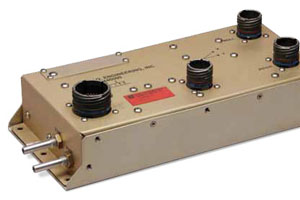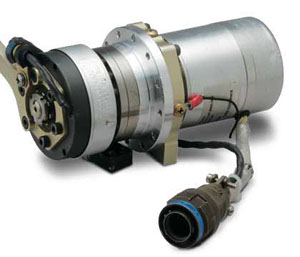
Cobham’s New HeliSAS


Not so very long ago, in the world of federated avionics systems (see the “Avionics Architecture” editorial in the Oct./Nov. 2010 issue of HeliMx) there were autopilots, stability augmentation systems (SAS) and flight directors. Autopilots provide hands-off helicopter stability, SAS provides hands-on helicopter stability and the flight director is a navigation tool providing a family of vertical and lateral computed steering commands to the pilot and/or autopilot.
The Lines Have Blurred
In today’s avionics market, with the advent of digital integrated and distributive systems, the lines have blurred. Systems are no longer structured along strict tasks, but rather perform a variety of tasks under one name. In the commercial market, autopilots, stability augmentation systems and flight directors can be found installed in various makes and models of the larger helicopters. In the light and medium helicopter markets it is more practical from a cost and weight perspective to find just a SAS or autopilot installed. Today Cobham has specifically designed a system for any helicopter that has a hydraulically-boosted control system. They call it HeliSAS and it combines the features of an autopilot, stability augmentation system and flight director in one small and lightweight package. The system architecture is a parallel design that maintains the integrity of the basic helicopter flight control rods while using electro-mechanical servo actuators that are connected to the helicopter’s flight controls rods using parallel linkages.
General Theory of Control
The HeliSAS is a two-axis attitude hold, attitude command, flight control system. The system has two basic functions: SAS to aid with aircraft stability and autopilot outer loop control modes for altitude hold, heading select and navigation sensor coupling. The various autopilot modes can only be engaged when the SAS mode is already engaged and airspeed is greater than the designated minimum engagement airspeed for the autopilot (44 KIAS).
At this time, HeliSAS is STCd on the B206, B206L, B407, AS350 Model Series, and EC-130 helicopters. It is a VFR system designed for aircraft flying Part 27 and Part 29. There are but seven parts to the system: digital flight control computer, HeliSAS control panel (HCP), attitude gyro or air data attitude heading reference system (ADAHRS), pitch servo, roll servo, cyclic control buttons and an installation kit. HeliSAS is a single system in that there is a single autopilot and SAS and it is designed for single-pilot operation.
The Components
HeliSAS control panel (HCP) — The HCP interfaces with the flight control computer (FCC). This push-button panel located in the cockpit within the pilot’s reach provides for engagement of the SAS and the desired autopilot mode selections of altitude hold, heading hold, navigation signal tracking and vertical (approach) navigation features, which are controlled via the six push buttons on the panel.

Flight control computer (FCC) — The FCC receives inputs from the HCP as well as from the on-board NAV, GPS and attitude systems and commands the pitch and roll servos to perform the selected autopilot function.
Internal to the FCC are three body axis rate sensors, a triaxial accelerometer, two differential pressure sensors and one absolute pressure sensor. The rate sensors and accelerometer are used to sense the rotational velocities and acceleration of the HeliSAS in three orthogonal axes. The pressure sensors are used to detect and calculate the indicated airspeed and altitude of the airframe.
The FCC uses RS-232, RS-422, and ARINC 429 digital communications ports as the primary means of transferring data. The HCP communicates with the FCC via RS-422. The FCC receives the attitude data via ARINC 429 or analog signals, depending on the attitude source. GPS data is transmitted to the FCC via ARINC 429. The FCC also receives discrete inputs from the momentary trim (TRIM) switch and AP/SAS disengage (AP DISC) switch mounted on the left and right cyclic controls. Additional FCC outputs include the current commands to drive the pitch and roll servo brushless motors and clutches, as well as an aural warning tone to the audio panel that alerts the crew whenever a HeliSAS mode has disengaged. The FCC also receives and processes air data information directly from the pitot/static system.
HeliSAS employs a dual fail passive architecture wherein identical safety monitors are implemented in both of the internal processors and either processor can disengage the system if a monitor is tripped. When a safety monitor is tripped, the FCC will disengage the servo clutches, set the servo-motor commands to zero and activate an aural warning tone to alert the pilot that the SAS/AP has disengaged.
The FCC has four connectors. The first connector interfaces with the attitude source and the cyclic AP DISC and trim button. The second connector interfaces with the roll servo, the third connector interfaces with the pitch servo and the fourth connector interfaces with the HCP. The FCC sends error signals to the servos. There are no switches or controls on the FCC.
Roll and pitch servos — The servos receive roll and pitch error signals from the FCC and provide roll and pitch correction to the cyclic controls through electromagnetic clutches located within the servos.
The servos are electromechanical servo-actuators consisting of a DC brushless commutating motor, low ratio gearbox, clutch and servo position feedback resolvers that control the pitch and roll axes of the helicopter. The servo-actuators are connected to the flight control system in parallel with the basic helicopter control rods and have manual servo motor back-drive capability. The clutches consist of an electromagnetic pressure plate design that disconnects the servo-actuators from the flight control system when the HeliSAS is selected off. Loss of power to the clutches causes them to fail to the open, clutch face separated position. The gear ratio between the cyclic stick and the servo-motor is sufficiently low so that the helicopter can be safely flown with the SAS disengaged and the clutch stuck closed (i.e., the pilot can back drive the gearbox and servo-motor with negligible resistance).

Enhancing Handling Characteristics
According to Cobham, “The HeliSAS stability augmentation system is designed to be engaged at all times, from before takeoff to after landing, to provide unmatched stability and ease of handling. It dramatically reduces pilot workload while providing precise control during all modes of flight, regardless of wind conditions or shifts in weight. The “force feel” (force trim) feature enhances handling characteristics and mitigates inadvertent cyclic control inputs that could result in dangerous attitudes. The pilot can override the HeliSAS at any time with manual cyclic inputs. Only 3.5 pounds of pilot force in the pitch axis and 3.0 pounds in the roll axis at the cyclic control is required to override the system for pilot desired maneuvering when either the SAS or autopilot modes are engaged.”
From a functionality standpoint, the SAS mode maintains commanded attitude; if the helicopter is inadvertently flown to an extreme attitude, releasing the cyclic when HeliSAS is engaged will automatically return the aircraft to a near-level attitude. The autopilot modes provide lateral and vertical navigation to include wing leveler, heading select and heading hold, VOR, localizer, LNAV (FMS lateral steering) and VNAV (FMS vertical steering), back course, GPS, altitude hold, glideslope and FMS altitude preselect. One lateral and one vertical mode can be active at the same time. The HeliSAS displays which modes are active on the HeliSAS Controller or EFIS. There are no options required with HeliSAS as everything comes with the installation package. All sensor inputs are digital and communicate over an ARINC 429 bus.
From a troubleshooting standpoint the system employs built-in-test (BIT) and it runs on power-up and continuously while the system is operating. There are no adjustments that have to be done to the system as all system gains are determined in flight during the STC process. Once the system is installed, there are no periodic maintenance procedures to contend with. All line replaceable units (LRUs) are qualified as on-condition. The system integrates with the graphic flight management system of the Cobham EFIS.
Cobham owns the STC and installations can only be done by authorized HeliSAS dealerships. A list of authorized dealers is available at www.HeliSAS.com. The installation takes an estimated 40 hours to accomplish.
A service is available from On-Course Solutions (independent from Cobham) for installation checkout, performance verification and customer ground and flight training. Visit www.HeliSAS.com for more information.
